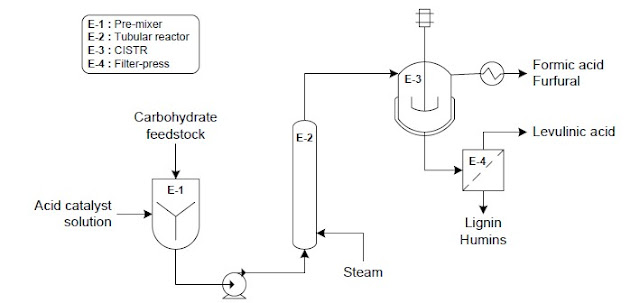Joensuu Bio-oil Plant
Nombre / Name
|
Joensuu Bio-oil Plant
|
Empresa / Company
|
|
Localización / Location
|
Joensuu (Finland)
|
Categoría / Category
|
Comercial / Commercial
|
Estado / Status
|
Operación / Running
|
Plataformas / Platform
|
Aceite de pirólisis y calor y electricidad / Pyrolysis oil and heat and electricity
|
Materia prima / Feedstock
|
Residuos forestales y otros tipos de
biomasa leñosa / Forest residues and
other wood based biomass
|
Producto / Product
|
Bio-oil y
|
Puesta en marcha / Start-Up
|
Noviembre 2013 / November 2013
|
Figure 1. Bio-oil plant in Joensuu
(extracted from Fortum webpage)
La primera planta de bio-oil a escala industrial del mundo fue
comisionada en Joensuu (Finlandia) en noviembre de 2013. Los trabajos de
construcción comenzaron en junio de 2012 con Metso
Power como contratista llave en mano. Esta instalación de Fortum está
integrada con una planta de cogeneración y produce 50.000 toneladas de bio-oil
al año y electricidad y calor. El bio-oil se obtiene a partir de madera de los
primeros clareos y otros tipos de biomasa leñosa, como por ejemplo subproductos
de la industria forestal recogidos de manera local en la región de Joensuu. El
bio-oil producido reemplaza fuel-oil ligero y pesado en calderas y en
producción de vapor. En el futuro, también se prevé su utilización como materia
prima para productos químicos y combustibles de transporte. The first bio-oil plant in the world on an industrial scale was commissioned
in Joensuu (Finland) by November 2013.
The construction work started in June 2012 with Metso Power as a turnkey contractor. This Fortum facility is integrated with a CHP plant
and produces 50,000 tonnes of bio-oil per year and electricity and heat. Bio-oil
is obtained from wood from first thinnings and other wood biomass, such as
forest industry by-products sourced locally from the Joensuu region. Bio-oil replaces
heavy or light fuel oil at heat plants and in industrial steam production. In
the future, it is expected to be used as a raw material for various
biochemicals and transportation fuels.
Figure 2. Bio-oil plant
scheme (extracted from Fortum webpage)
La biorrefinería está basada en tecnología de pirólisis rápida. Astillas
de madera con un contenido de humedad en torno al 10% se alimentan al reactor
junto con arena caliente (800ºC) procedente de la caldera principal. Allí, las
astillas son calentadas muy rápidamente hasta el rango de los 400–600ºC en
ausencia de oxígeno. A esta temperatura, la biomasa se descompone térmicamente
en cuestión de segundos para formar gases y un sólido carbonoso. Los gases de
pirólisis son separados de la arena y del sólido en un ciclón. Posteriormente,
se enfrían rápidamente a temperatura ambiente para producir bio-oil que es
bombeado a un tanque de almacenamiento. La arena y el producto carbonoso son
retornados a la caldera de lecho fluidizado. The biorefinery is
based on fast pyrolysis technology. Wood chips with a moisture content of about
10% are fed to the pyrolysis reactor together with hot sand (800ºC) from the
main boiler. There, chips are heated very rapidly to 400–600ºC in absence of
oxygen. At this temperature, biomass is thermally decomposed in a matter of
seconds to form gases and char. The pyrolysis gases are separated from the sand
and the char in a cyclone. Subsequently, they are quickly cooled down to room
temperature producing bio-oil that is pumped into a storage tank. The sand and
the char are sent back to the fluidized bed boiler.
Fortum invirtió 30 millones de euros en su planta de bio-oil y en las
obras de adaptación de la planta de cogeneración. El proyecto recibió 8,1
millones de euros de financiación del Ministerio de Empleo y Economía de
Finlandia. El desarrollo y conceptualización de la tecnología fueron llevados a
cabo de manera conjunta por Fortum, Metso, UPM
y el Centro de Investigación VTT de Finlandia. La investigación formó parte del "BioRefine Programme" de TEKES (Agencia Finlandesa de Financiación para la Innovación).
Fortum invested about 30 million euros in its bio-oil plant and in modification
work to its heat plant. The project received 8.1 million euros of investment
grant from the Ministry of Employment and The Economy of Finland. The development
and conceptualization of the technology was carried out collaboratively between
Fortum, Metso, UPM and VTT Technical Research Centre of Finland. The research was part of the
BioRefine Programme of TEKES (the Finnish Funding Agency for
Innovation).
________________________________________________________________________________
REFERENCIAS / REFERENCES
1 www.fortum.com (accessed on 14th April 2016).






